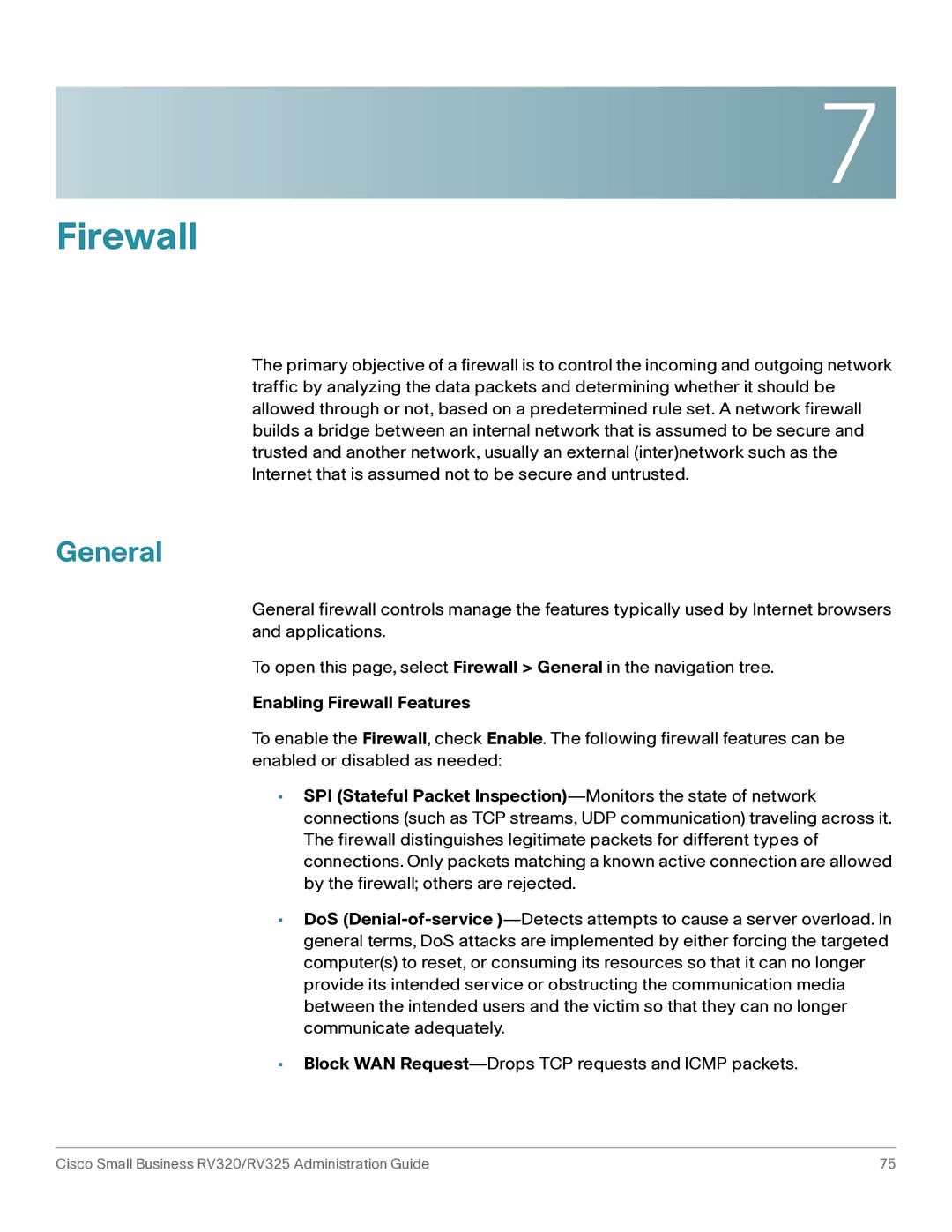
7
Firewall
The primary objective of a firewall is to control the incoming and outgoing network traffic by analyzing the data packets and determining whether it should be allowed through or not, based on a predetermined rule set. A network firewall builds a bridge between an internal network that is assumed to be secure and trusted and another network, usually an external (inter)network such as the Internet that is assumed not to be secure and untrusted.
General
General firewall controls manage the features typically used by Internet browsers and applications.
To open this page, select Firewall > General in the navigation tree.
Enabling Firewall Features
To enable the Firewall, check Enable. The following firewall features can be enabled or disabled as needed:
•SPI (Stateful Packet
•DoS
•Block WAN
Cisco Small Business RV320/RV325 Administration Guide | 75 |
